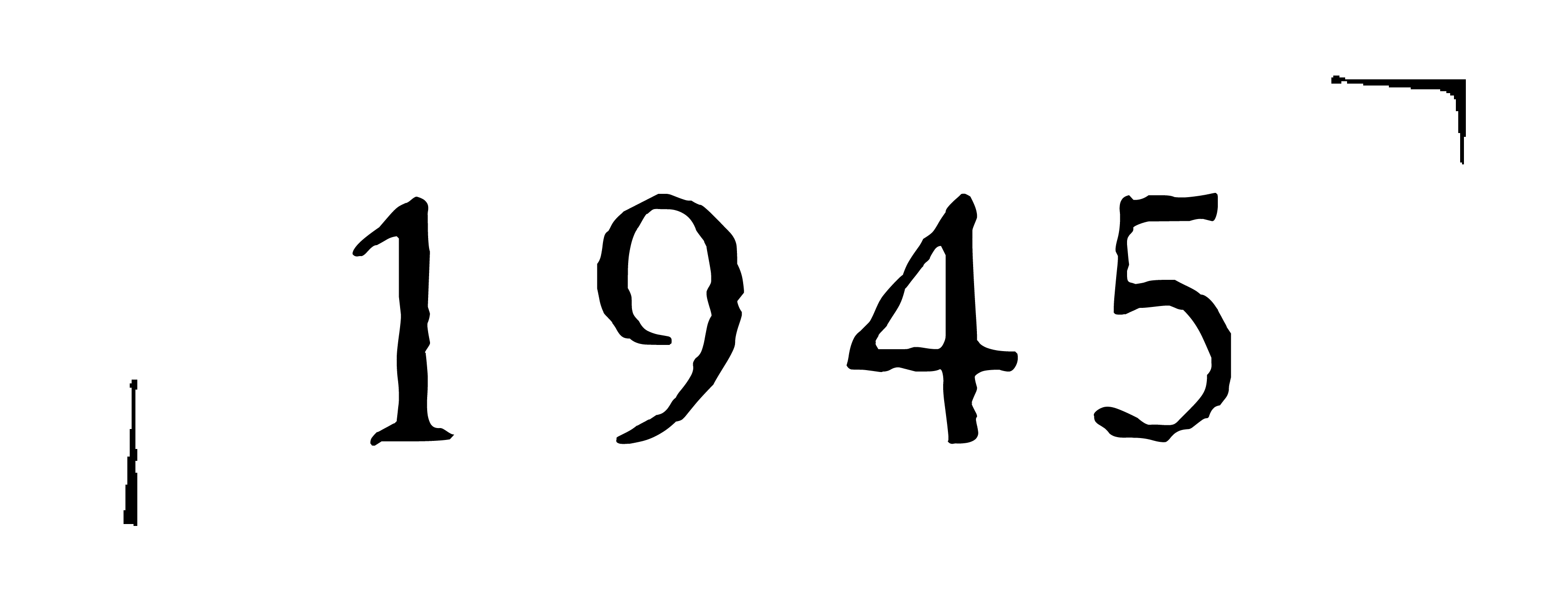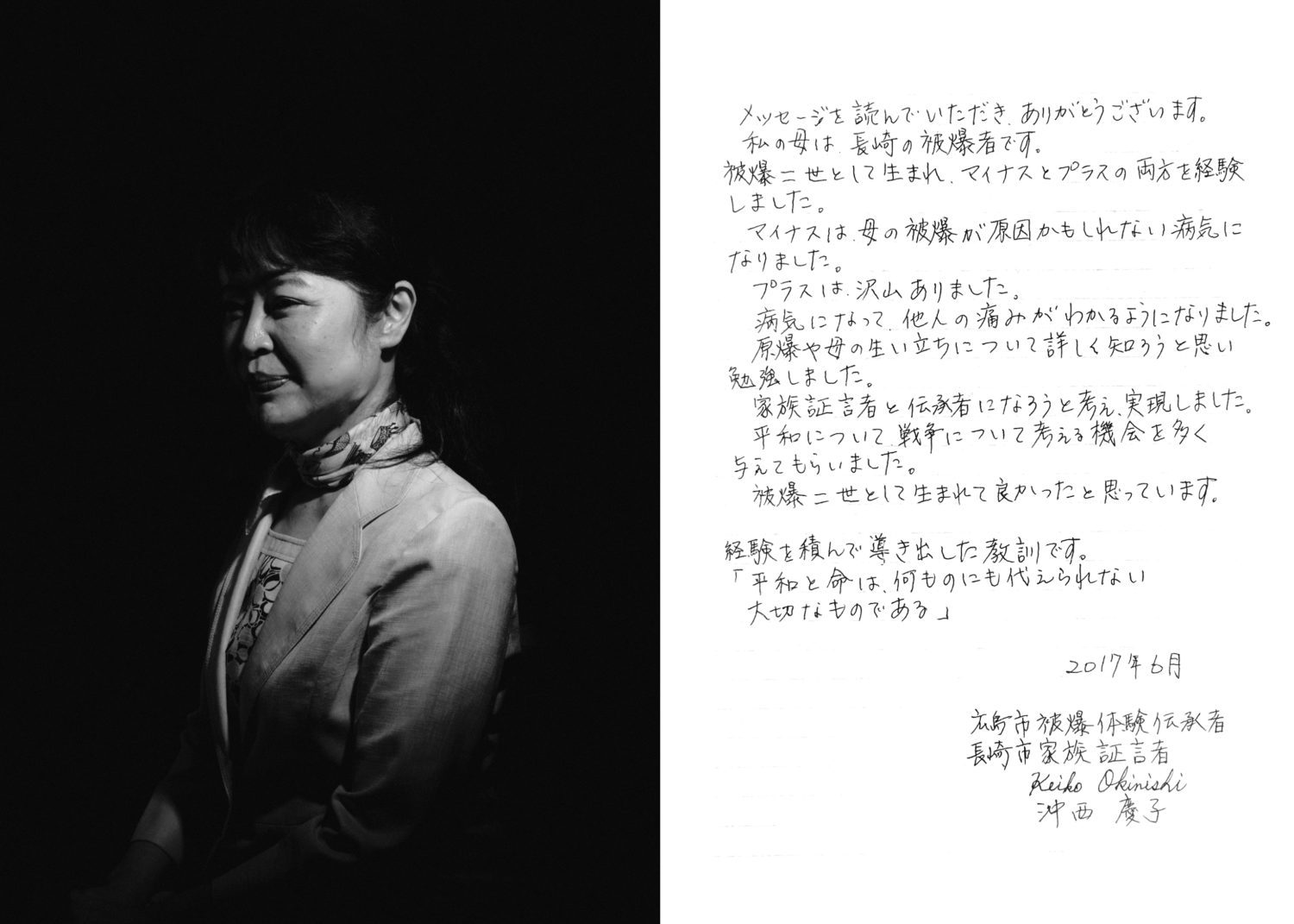Ms. Keiko Okinishi
Age: 52
Location: Nagasaki
Distance from hypocenter: Second Generation
“Thank you for taking the time to read my message.
My mother is a hibakusha from Nagasaki.
As a second generation hibakusha, I have had both positive and negative experiences.
The negative is, I’ve been diagnosed with a disease likely caused by my mother’s exposure to the atomic bomb.
That being said, there have been many positive experiences.
Due to my disease, I have been able to share the pain of others. I have felt compelled to learn more about the atomic bomb and my mother’s history.
I have aspired to become a kazokushougensha (family member successor) and denshousha (legacy successor), and fulfilled my dreams.
I have been blessed with many opportunities to think critically about war and peace.
I am glad to have been born a second generation hibakusha.
Below is a lesson conceived from my past experiences.
“Peace and life are two precious things that can never be replaced.”
2017, June
Hiroshima Hibakusha Legacy Successor
Nagasaki Family Member Successor
Keiko Okinishi
Okinishi Keiko”
“I grew up in Nagasaki until the fifth grade, and later moved to Hiroshima. In both cities, it was a class requirement to visit the peace memorial. I remember being very fearful of the exhibits – they weren’t as subdued back then. There was a particular exhibit featuring a preserved hand that I was very afraid of. Things are different nowadays. Even the wax figurines in the Hiroshima exhibit don’t stand a chance.
As I was constantly surrounded by other hibakusha, I was not cognizant of my status as a second generation hibakusha until 2008, when I was diagnosed with a thyroid disease. My mother inquired if it had anything to do with her being a hibakusha. The doctor replied that there was a very strong possibility. My mother was distraught.
In an effort to console my mother, I started attending classes to study the effects of nuclear radiation. I wanted to learn the science behind the atrocity and reassure my mother that it wasn’t her fault. While I was hospitalized, I saw a television program about a photographer named Keizo Yoshida who was working on a long-term project photographing second generation hibakusha like myself. I reached out to him, and we met two years later. He revealed to me that 9 out of 10 second generation hibakusha refuse to get their portrait taken, fearing that they would be stigmatized by their coworkers, their loved ones. These statistics shocked me. Although I had never experienced prejudice due to my unique upbringing, I realized that many hibakusha descendants felt inclined to mask their identities. I also realized that if things continue on like this, the hibakushas’ stories will wear thin with time.
In 2013, I began to attend training sessions at the Hiroshima Peace Memorial to become a legacy successor for my mother. I heard my mother’s full story at the age of 48, when she mentioned “brother Chuzo” for the first time. Chuzo was a cousin of hers that she lost to the atomic bomb attack. My mother had never spoken to me about other family members that fell victim to the bombing up until this day.”


